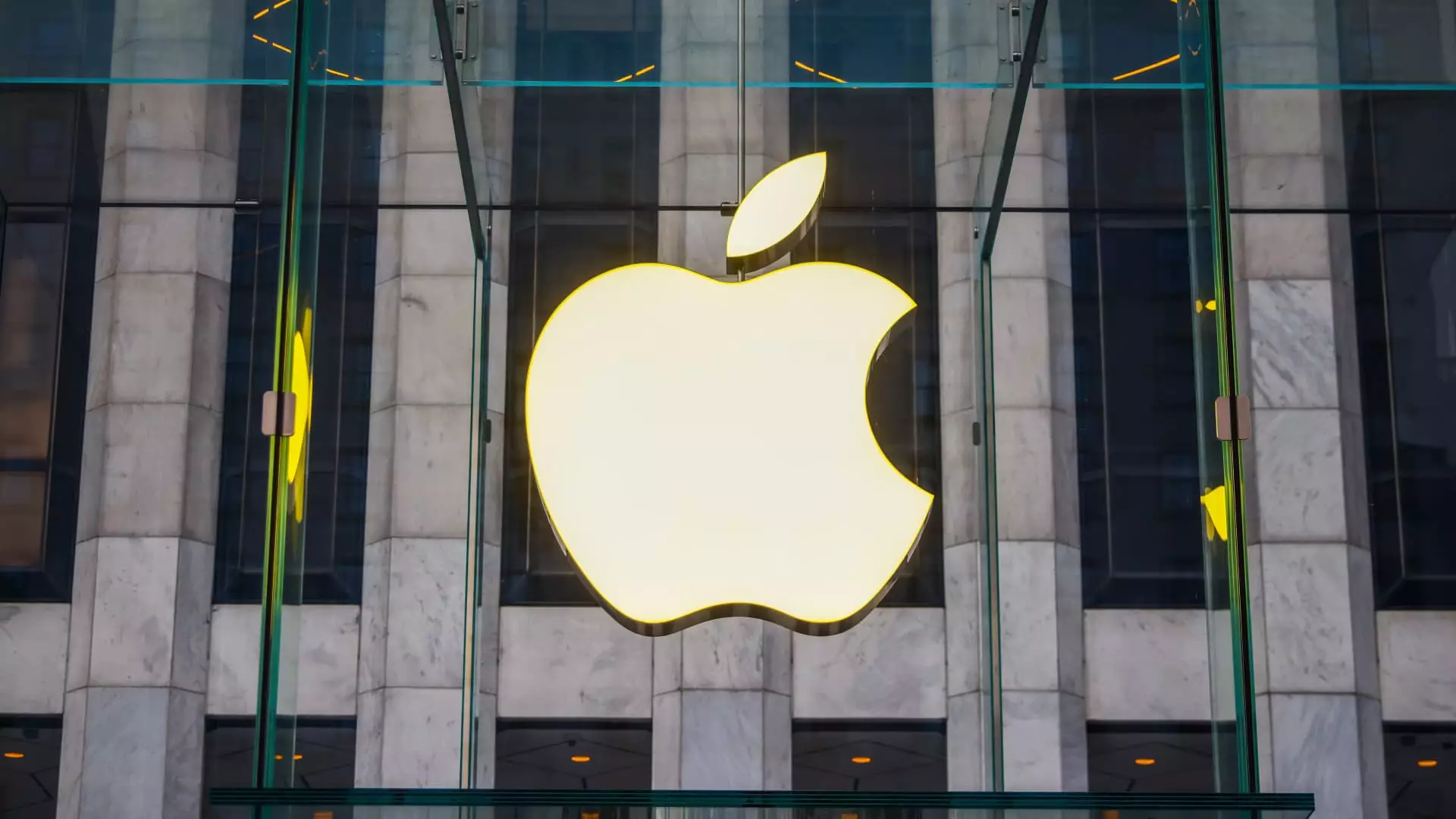Apple Inc., an undeniable leader in innovation and technology, has captivated investors and consumers alike with its groundbreaking products and services. However, despite achieving new 52-week and all-time highs just weeks ago, recent trends suggest that the company’s performance relative to its tech peers is faltering. While the stock price continues to climb, its comparative growth is less impressive, raising questions about the sustainability of Apple’s dominance.
Performance Metrics: A Closer Look
In the complex world of stock performance, relative positioning matters significantly. Since reaching its peak relative performance on September 27, 2022, Apple has seen a gain of approximately 49.9%. While this growth appears commendable on the surface, it pales in comparison to the recent 92.7% increase experienced by the SPDR Technology Select Sector ETF (XLK) during the same period. This stark contrast indicates that while Apple continues to grow, it is underperforming when measured against its technology sector peers.
Investors who placed $1,000,000 in Apple at the end of Q3 2022 would be looking at a modest valuation of $1,049,900 today. In contrast, those who invested the same amount in the XLK would have enjoyed a more substantial return of $1,092,700. This performance disparity raises critical concerns about Apple’s ability to maintain its historic edge in a rapidly changing technology landscape.
Several factors contribute to Apple’s relative underperformance. Market dynamics play a crucial role; the tech sector has witnessed a reallocation of investments favoring other entities which are perceived as more dynamic or promising. Furthermore, while Apple’s strong brand loyalty remains steadfast, growing competition from emerging technologies and companies presents significant challenges. The intensity of competition may have the effect of throttling Apple’s growth, suggesting a potential shift in market perceptions and consumer expectations.
Additionally, one must consider the broader macroeconomic environment in which Apple operates. Rising interest rates, inflationary pressures, and changes in consumer spending habits can have profound implications for any corporation, irrespective of its market dominance. These external factors could also be stalling Apple’s growth trajectory against the broader backdrop of the tech sector’s impressive performance.
For long-term investors, the current analysis suggests a cautious approach to holding stock in Apple. While it is imperative not to overlook the company’s strong fundamentals, it may be prudent to reassess exposure to this stock, especially in light of better-performing alternatives available within the technology sector. Diversifying investments among various players in the industry could potentially yield greater returns, making more agile tech stocks a safer bet.
Apple’s recent historical performance, while still standing tall, is increasingly overshadowed by the remarkable growth of its competitors. As investors and analysts closely monitor these trends, it is essential to remain vigilant about market shifts and evolving dynamics to make informed financial decisions. For those who have invested long in Apple, it may be time to weigh choices and consider a diversified approach for future gains, rather than relying solely on a brand that, while iconic, may be struggling to keep pace with its peers.


Leave a Reply